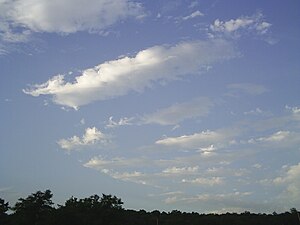Salajida
Salajida (사라지다) is a Metzettan aesthetic ideal and philosophic concept relating to the ephemeral nature of existence, fleeting moments of beauty and the interconnectedness of all things. Present in all aspects of Metzettan culture, it is one of Kanjin's four heavenly virtues alongside Geo-Ban, Gwangye and Juinui Son. The world "salajida" is usually translated simply as "disappearing," alluding to its core tenet that nothing is permanent, all things constantly shift from one state to another even when appearing to remain the same, and moreover that comfort and beauty can be found in this fact. Salajida also stresses that these fleeting moments of beauty reveal the interconnected nature of our world; the passing of a beautiful stranger in a crowded street whom one may never pass again; the joy of hearing the innocent laughter of one's children on a summer's evening and the gentle falling of delicate petals from the blossoms of a plum tree are all embodiments of salajida.

Definition
It is considered a fool's errand to attempt translating salajida from Metzi to another language with any degree of effectiveness, however in general it deals with transitory and irreplicable moments of beauty revealing the hidden connections between people, places and things. Moments where salajida are revealed are considered impossible to ever exactly repeat. Becoming more aware of salajida is considered the mark of an extremely wise man in Metzetta. Salajida is also impossible to "bottle" or capture in any meaningful way, that is to say, it cannot be forced into being, only noticed when it naturally arises.
Examples
Salajida is more easily understood by example than by rote-learning of definitions. Commonly cited moments where salajida is revealed include;
- Bar room conversations: A meeting with a stranger in an unfamiliar bar while passing through a distant town takes place; one may consider that this person will never be met again, this conversation never repeated, this drink never enjoyed in the same setting, the stranger's own business in town differing from one's own yet bringing both to the same place at the same time.
- Breaking waves: As waves break across the shoreline, seafoam forms delightful patterns on the sand before slipping away. The same white veins will never appear in the same formation again, and one is powerless to prevent them returning to the ocean. Onlookers are also invited to consider how many unseen others stand before the same sea contemplating their own breaking waves.
- Clouds: Kanjin described clouds as his preferred example when teaching students about salajida. The form of the cloud and the nature of the sunlight passing upon it is ephemeral, uncontrollable and impossible to repeat. It is unknown to the viewer how many untold others have gazed upon this cloud before it dissipates.
- Seasons passing: Autumn leaves, winter snow, spring blossoms and summer rainfall all provide ample opportunities to reflect upon and consider salajida.
- Children laughing: As a father listens to his child laugh during play, he may consider how lucky he is to be present for that moment and recall that he too was once a child being watched over by his own father; in this way the connection between all three, the father, son and grandfather, is strengthened.
In practice
While salajida is an aspect of the universe to be observed and not created, attempts are still made to capture aspects of its worldview in painting, poetry and music. To be sure, salajida does inform the subjects of works of art, but more importantly it informs the process of a work's creation and its life after leaving the hands of the artist. Once paintings are completed, they naturally fade and crack which is considered an example in itself of salajida; the passing between states and unique opportunities for onlookers to witness a physical manifestation of the passage of time only adds to an ancient work's greatness. Indeed, traditional artists did and continue to neglect digital art in Metzetta due to a computer file's immunity to this weathering.
The subtly different live performances of the same song and the shared experience of the crowd at a concert could also be considered an embodiment of salajida; as could leaving small mistakes present in studio recordings. In modern times, performance artists have attempted to employ salajida to make a moment in time itself into a work of art, existing only in the mind of the performance's observers.